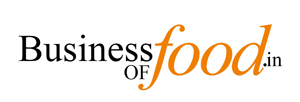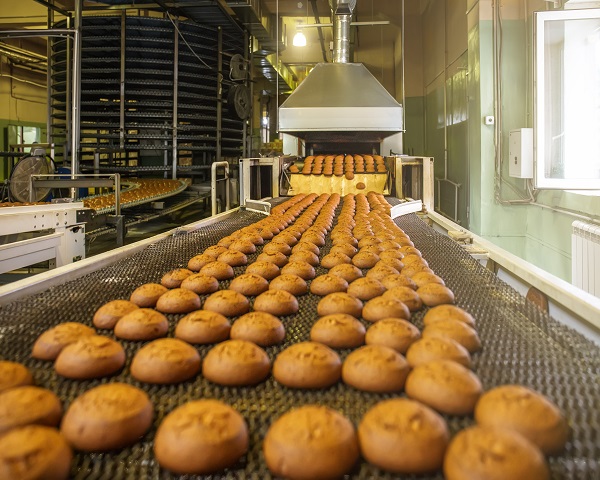New and emerging consumer traits as a result of changing lifestyles, the emergence of more complex routes to market (distribution channels), consolidation of power in the industry as a whole, and increasing international competition are the major challenges faced by both food manufacturers and retailers today for which they need to craft effective strategies in order to adapt and cash in on the existing and emerging market opportunities.
Most Food and Beverage Manufacturers and Retailers strive for excellence in their manufacturing and retailing operations, which are often a mix of problem-solving, collaboration, and leadership gambits geared toward consistently pushing performance metrics in a positive direction.
Food manufacturing and retailing operations also require strict consistency and operate on thin margins. It means that manufacturers and retailers have to be quick on their feet to cash in on the existing and emerging market opportunities. For instance, during the pandemic, grocery spending had skyrocketed, and agile companies were quick to adapt to the fluctuations in demand
Today, a major cause for concern in food business operations is recalls. Pulling products involves a massive, expensive undertaking that can have lasting reputational damage, especially if they pose a risk to health or safety.
It is therefore imperative to focus on fine-tuned food manufacturing and retail operations that can boost efficiency, quality, sustainability, and scalability, besides avoiding the pitfalls of the F&B business. So, more than ever before, food manufacturers and retailers must make their operations their top priority and foremost concern.
Challenges and Complexity for F&B Business
Changing consumer lifestyles is a first among market forces that pose a challenge the Food and Beverage (F&B) Industry. The shifts in consumer behavior have led to the emergence of consumer traits, which have a significant impact on the industry. These consumer traits include:
- Dynamic and unpredictable consumer tastes bordering on fashion trends
- Weakened brand loyalty as acceptable alternatives proliferate
- More sophisticated consumers wanting no trade-offs between costs, quality and variety.
The uncertainty for players in the F&B business is generated by unpredictable consumer purchasing patterns. The huge choices and low boredom thresholds fuel shorter product life cycles and rapid product changes resulting in numerous products, packaging and size variants. This demands higher advertising spends and high quality expectations from both manufacturers and retailers.
Due to the increasing rates of new product development, the manufacturing and retailing capability for adoption of rapid new products has risen significantly. But new and frequent launches require shorter production runs, frequent changeovers and inventory turnaround time, with greater focus on asset utilization for both manufacturers and retailers.
Seasonality is another factor that manufacturers and retailers need to address. Many products such as soft beverages, ice creams and beer suffer from unpredictable seasonal sales. Manufacturers and retailers do not want to miss the chance of attracting new consumers during the season and draw
consumers into the market. But the optimum balance between these two depend on product shelf life, cost of stock holding versus the spare capacity, and the flexibility of the manufacturer and retailer. However, efforts to improve the forecasting with accurate predictions are difficult.
The second factor to pose a challenge for the F&B business is the emergence of more complex routes to market via the emergence of new Distribution Channels. Though consumers are the final arbiters of a product’s success, the distribution channels create significant demands on both manufacturers and retailers. They have to keep a variety of distribution channels adequately supplied. The three distribution aspects that have to be managed are:
The power of the major multiples: At some companies, the retail customer’s needs are the primary focus and this has resulted in two major issues:
1.The rise of private & regional brands: It has been found that the success of private labels and regional brands depends on the personal disposable income and on the private label’s quality and consistency. In Europe, private labels have the highest market share for bulk and commodity products and are moving towards higher value-added products. In Europe, over 80% of population perceives private labels as having the same or better quality than National brands. As retailers move to higher value-added products with private labels, the pressure will be on more differentiation from more technically complex products, more innovation and greater promotional refinement, which will add cost, increase complexity and fragment the market.
2.Retailer ownership of critical sales information: The fact that retailers stand between the producer and the end-consumer creates all sorts of complications for manufacturing. The retailer becomes powerful due to:
- Retailer possesses better and different information and perspective about the consumer trends and attitudes.
- Retailers distort the competitive conditions and place heavy demands on Customer Service. Products often compete according to the promotional directive set by the retailer rather than the manufacturer. Operating under different competitive rules to the retailer makes it difficult to have the optimum manufacturing strategy.
- The Retailer acts as an inventory buffer, disrupting demand and supply information leading to disruption in production schedules.
The growth of food service outlets: Americans spend 57% of their total food budget on eating out, either at a fast food joint or in a restaurant. In comparison, Europeans still allocate only 25% -35% of their total food expenditure budget to ready-to-eat prepared food, and all indications are that this will continue to grow. The drivers are working women, less time taken to prepare food and grazing instead of regular meals. Retailers are taking this threat seriously and are introducing quality onsite cafes and restaurants.
Both food manufacturers and retailers will have to adapt to protect their market share and status in retail by way of introducing shorter product cycles, different pack formats, and new demand patterns. Certain food manufacturers and retailers will also need to diversify into food service to protect their market shares.
Competitive activity in smaller retail outlets: Further complications are provided by the impulse purchases in smaller outlets such as corner shops and gasoline stations. The price war between retailers and petrol companies has an impact on food logistics. For example, in the UK in 1996, there was an 8% decline in the sales of the soft beverages and the major reason was that the retailers attracted gasoline consumers with the price-parity promise activity.
The competition has resulted in a number of initiatives between retailers and gasoline companies as well – for example, between Sainsbury & Shell and Safeway and BP in the UK. With the current interest in Efficient Consumer Response (ECR), retailers are beginning to focus on shortening the response time and minimizing the inventory holding. Going ahead, the system complexity will only increase, resource requirements will be greater, and the opportunity for errors will multiply.
As the relative importance of alternative market outlets grows, production planning, manufacturing, logistics and distribution will have to be equipped to cope with the different but equally important demands from each route.
The third major factor affecting the F&B retail business is the consolidation of ownership, which has occurred in both retail and the food manufacturing sector. At the same time, the growth of major multiples has squeezed out independent stores and small supermarkets, which could not compete on price, thereby also simplifying the distribution lines for food manufacturers. The subsequent price wars that emerged between the surviving retailers put pressure on the manufacturing performance, encouraging acquisition and cost reduction strategies across the industry.
Unfortunately for the F&B industry, the consolidation of power that comes from mergers and acquisitions has not produced the leverage because retailers have a choice of suppliers but the brand producers have limited choice in the retail outlets. Both sectors of the industry are now in the divergent phase.
Last but not least, competition for a share of the static markets has encouraged Internationalization – the fourth big challenge for the industry – as a result of which the financial growth of food & beverage players has become dependent upon:
- Taking market share from alternative food sources with different products
- Going up market into higher added value products
- Selling existing products into new territories
Internationalization is making it more complicated for F&B operators to compete. Large food manufacturing and retailing companies are looking at ways to use their financial strength and brand image in the underdeveloped markets; and for all of them, the question of where to produce, procure, and distribute is the critical issue. The access to raw materials and to the market has a significant effect on the overall performance and location of manufacturers and retailers. So the issue of ‘local for local’ production and sale or ‘local for global’ is an important part of the food retailing strategy.
In the face of powerful retail outlets and greater International competition, food manufacturers and smaller retailers are forced to excel at both Products and Customer Service. This is against the grain of those who tend to choose one or the other requirement. Ultimately, there comes a point at which the cost of complexity in the industry becomes greater than the returns, and many players feel that too much fragmentation is driving cost up.
What will simplify the market dynamics once again? At the retail end of the supply chain, it could be ECR or perhaps further consolidation. On the manufacturing side, fit and agile food manufacturing companies are looking at three aspects of operations – the supply chain, operational practices, and leveraging the knowledge of people. One way to keep costs stable is to improve the information fl ow along the supply chain with the help of ECR.
Manufacturing and Retailing Strategies for the Future
The three generic strategies available to a food manufacturer or retailer for navigating today’s complex business landscape are:
- Product Leadership
- Customer Service
- Operational Excellence
To insure against competitive threats and to thrive in the supply chain system, food manufacturers and retailers have to satisfy all three of the above.
Product Leadership: Most ‘A’ listed brands and food manufacturers and retailers set the standards for the market, which is fundamental to driving consumer loyalty. For most brands, quality is an increasingly important part of their standards for production. Product leadership in a developed Food & Beverages market means understanding the consumer better than the competition, developing new products that will lead rather than follow, combining marketing excellence with product delivery, and investing in technology and unique manufacturing and retailing capabilities and concepts.
But additional product quality brings added competitive advantage only if others are unable to copy it. Still, there will be pressure on players to introduce premium products without compromising on customer service or cost issues. Manufacturing and retailing costs are obviously important in a competitive market but an excessive focus will lead to a threat to quality and service. Cost reduction and downsizing are dead-end strategies and not growth strategies. But large lean companies face the threat from other brands as they have fixed costs that cannot be changed.
Customer Service: Quality is not purely a product attribute but includes a wider non-product factor that creates a support or service package. In situations where product standards are largely given and the producer or retailer is not in a position to get closer to the customers, many companies try to differentiate themselves based on the support services that they offer.
Customer intimacy is very important in an industry dominated by powerful retailers. Technical support, vendor managed inventory, and product customization are ways to leverage product quality strategy. But these require greater flexibility in manufacturing, focused distribution, a service ethic, faster product development and close communications by building intimate relationship with the customers.
Operational Excellence: In focusing on operational excellence, food manufacturers and retailers usually turn to acquisition or cost reduction. But they are ineffective in inefficient markets and their efficiency wanes as the industry reaches a point at which operational excellence has delivered most of the competitive benefits. The usual objectives of an acquisition strategy are:
- Sector Leadership
- Vertical Integration to improve supply chain efficiencies
- Introduction of new capabilities
The one approach that unites all the above alternatives and can satisfy all the uncertainty of the market and customer is to create a ‘Learning Organization’ that is agile to deliver all the three. Achieving it depends on doing two things: first, improving the information flow in the network and, second, getting more out of the knowledge resource that lies with the people in the organization. Although any process improvements go straight to the bottom line, a random approach is not going to bring in the competitive advantage. The key is to focus on activities that develop skills and one that will equip a producer or retailer to adapt as external forces change.
The writer is Chief Brand Mentor, Pro Next Food Brands Pvt. Limited. As a Food Marketer, he has worked on Brand & Product Management, Market Research, Sales, Advertising and Sales Promotion Management, and in converting food commodity products into successful Food & Beverage brands




